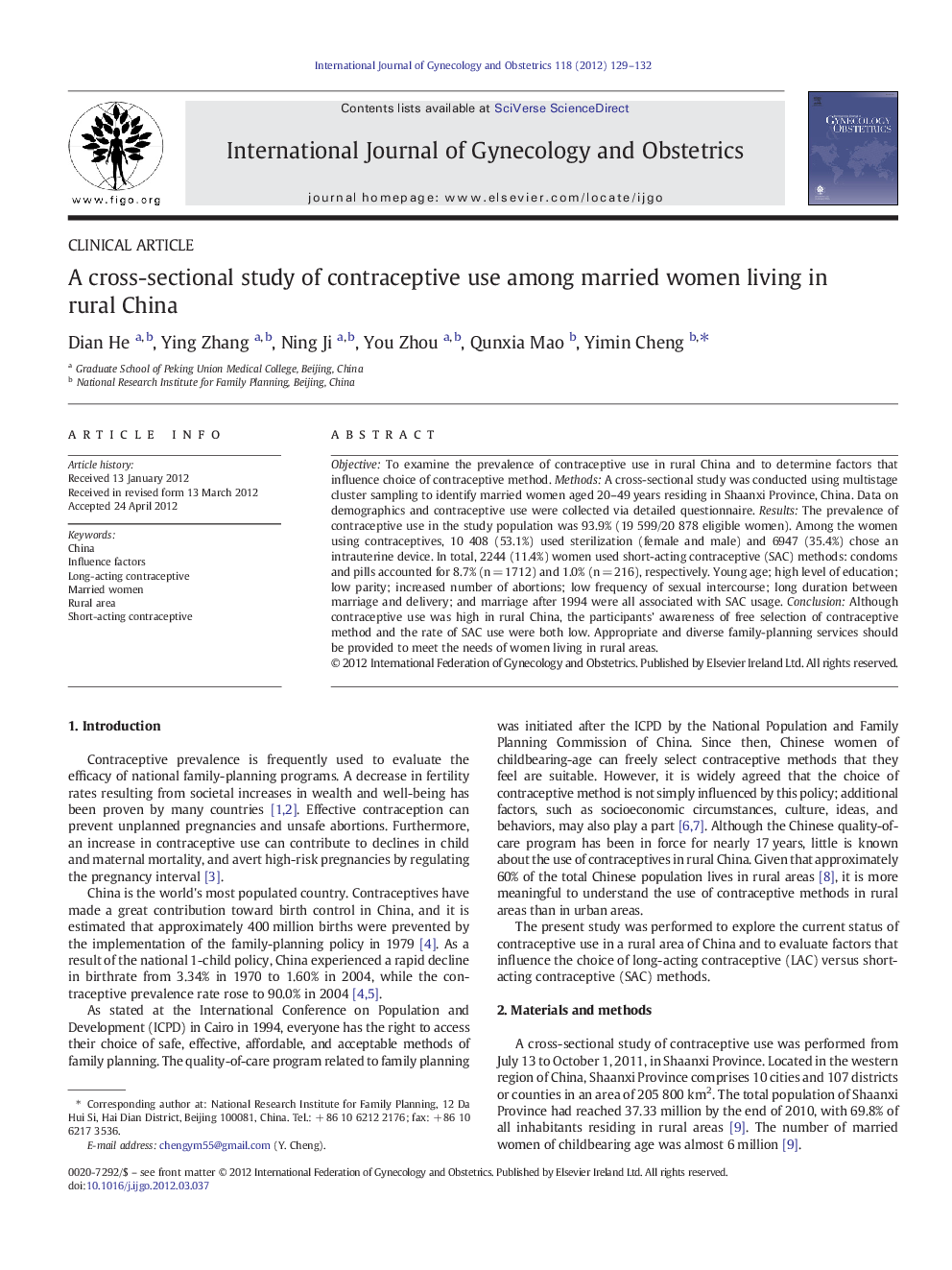| Article ID | Journal | Published Year | Pages | File Type |
|---|---|---|---|---|
| 3954345 | International Journal of Gynecology & Obstetrics | 2012 | 4 Pages |
ObjectiveTo examine the prevalence of contraceptive use in rural China and to determine factors that influence choice of contraceptive method.MethodsA cross-sectional study was conducted using multistage cluster sampling to identify married women aged 20–49 years residing in Shaanxi Province, China. Data on demographics and contraceptive use were collected via detailed questionnaire.ResultsThe prevalence of contraceptive use in the study population was 93.9% (19 599/20 878 eligible women). Among the women using contraceptives, 10 408 (53.1%) used sterilization (female and male) and 6947 (35.4%) chose an intrauterine device. In total, 2244 (11.4%) women used short-acting contraceptive (SAC) methods: condoms and pills accounted for 8.7% (n = 1712) and 1.0% (n = 216), respectively. Young age; high level of education; low parity; increased number of abortions; low frequency of sexual intercourse; long duration between marriage and delivery; and marriage after 1994 were all associated with SAC usage.ConclusionAlthough contraceptive use was high in rural China, the participants’ awareness of free selection of contraceptive method and the rate of SAC use were both low. Appropriate and diverse family-planning services should be provided to meet the needs of women living in rural areas.
